There is something immensely comforting about lying wrapped up in a blanket in the cold winter. But, when you wake up with a cottonmouth, winter itch, cracked lips, or a dry, bloody nose, it steals away the joy from this little winter comfort. This is the problem with cold, dry winter air. It leeches moisture from almost everything, leaving your skin, throat, lips, nose, and eyes parched like the Sahara. Of course, you may instinctively want to plug in the humidifier to save yourself from the ravages of cold dry air but that only adds to the terror of sky-high energy bills. And, if that isn’t bad enough, store-bought humidifiers are also notoriously hard to maintain, requiring diligent disinfecting as they are a common cause of mold growth. So, why not ditch the expensive humidifiers and try more natural alternatives to moisturize the air this winter? In this article, we will explore a simple and natural way to make a DIY humidifier. But, before that, let’s find out what the ideal level of humidity for a home is.
What Is the Ideal Humidity Level Recommended for a Home?
According to the United States Environmental Protection Agency (EPA), the optimum indoor relative humidity recommended is between 30 percent to 50 percent. Anything below this threshold can be bad for you and your home and can affect your health in many ways.
In the same vein, too much humidity or dampness in the air can promote the growth of mold, bacteria, and dust mites. Hence, you always want to ensure that the relative humidity (RH) is maintained below 60 percent indoors. A hygrometer is a great device for monitoring and measuring relative humidity.
How Does Humidity Impact Health?

Too much or too little indoor humidity can affect your health in a number of ways.
©Twinsterphoto/Shutterstock.com
Mayo Clinic indicates that low humidity is often the main cause of parched skin, dry and itchy eyes, sore throat, and breathing problems. As your nose and throat become dry, it also puts you at a higher risk for colds, flu, and other viral illnesses. High humidity, on the other hand, compromises air quality by releasing toxins and microscopic spores into the immediate environment. These harmful toxins can trigger allergies and asthma flare-ups.
That said, humidity levels do not impact health alone; your home can suffer too. Low humidity or dry air is known to damage floors, furniture, and window panes and may even cause your wood to shrink, splinter, and crack.
How to Make the Best DIY Winter Humidifier?
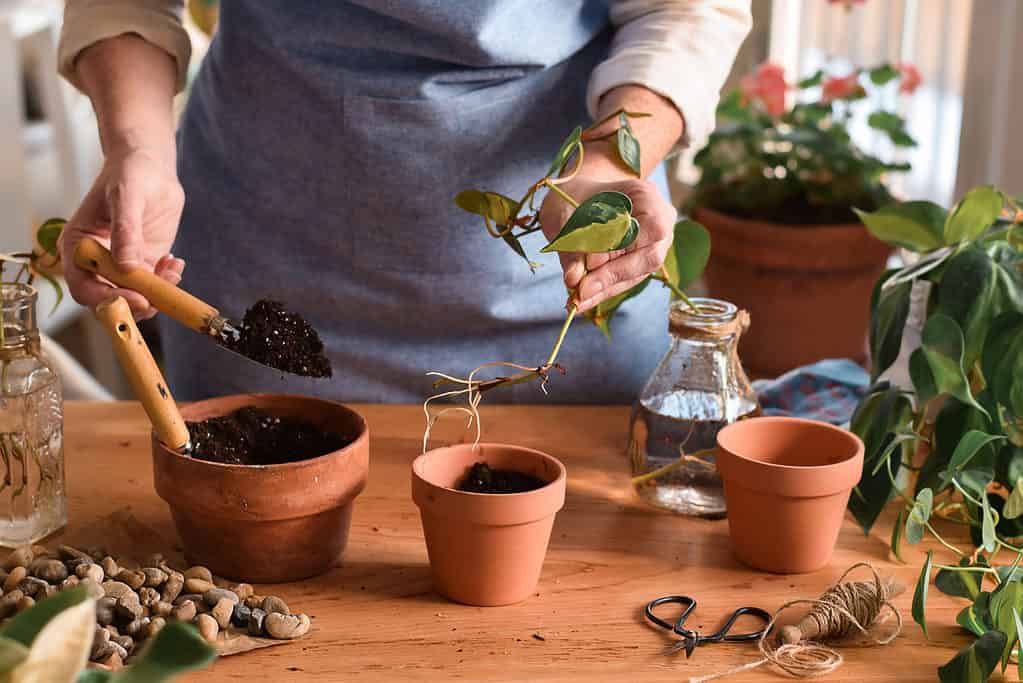
The ‘terracotta plant pot hack’ is a nifty hack that uses basic materials and is incredibly easy to replicate!
©iStock.com/JulieAlexK
After looking at a chock-full of cool DIY projects and ideas to make a natural DIY humidifier, one of the best and handiest solutions we found was the ‘terracotta plant pot hack’. This DIY hack uses a porous terracotta planter as a humidifying device and is a safe and passive way to increase humidity in a small space.
Terracotta or baked clay has been a key player in Chinese, Indian, and Brazilian households for a long time. This eco-friendly and low-cost ceramic material has phenomenal absorptive capacity, making it ideal for raising moisture in the air. Here’s what you will need to make this natural DIY Humidifier:
- An unglazed terracotta plant pot
- Glass Vase
- Damp towel or cloth
- Water
- Start by wetting the inside and outside of the terracotta plant pot with a damp cloth. Wetting or pre-soaking the pot will prepare it for the humidifying process.
- Fill the glass jar or vase with water. This will act as a water bath for the terracotta planter.
- Place the terracotta plant pot inside the glass vase, making sure it fits inside securely. If required, you can place a plate or tray to catch any water spills.
- As the pot absorbs water from the vase, it will slowly release moisture into the air, thereby increasing the humidity in the surrounding area.
- To ensure that the terracotta pot stays moist, monitor the water level in the glass vase and the terracotta pot and refill the glass vase as needed.
Other Natural DIY Ways to Combat Dry Air
- Use your instant pot or a big pot to boil some water on the stovetop. When the water boils, it will release steam into the room.
- Leave the dishwasher open at the end of the dry cycle. All the dishwasher steam can help humidify the air.
- Set vases or bowls of water on a sunny window sill or near vents and radiators. As the water heats up, it will evaporate, slowly adding moisture to the air.
- Let your clothes and towels air dry. Damp laundry will release water back into the air as it dries.
- Leave the bathroom door open after a hot shower. This will keep the air moving and will allow the humidity of the shower room to make its way into other rooms.
- Spritz your curtain with a little water. Make sure they are made with lightweight fabrics though, as thick, heavy fabric will easily mildew. As the moisture from the damp fabric evaporates, it will release humidity into the air.
- Try the sponge soak method. This involves saturating a sponge with water and setting it in a container or bowl. This will passively release moisture into the air.
- Set up an indoor water fountain. While this isn’t one of the cheapest ways to add moisture to the air, it will definitely help fill the room with cool humidity.
- Invest in a fish tank. According to Oregon State University, a tropical fish tank can help add a lot of moisture to the air. Make sure you seal the fish tank with a proper vapor barrier though, or the condensation will damage your walls.
- And finally, add some houseplants to your space. Houseplants, apart from being aesthetically pleasing, will help moisten the air through a process called transpiration.
Houseplants That Increase Humidity
Plants release 97 percent of the water they take up and are, therefore, one of the easiest ways to stabilize humidity in a dry room. Try adding some of these plants to keep the humidity up in your house:
1. Anthurium

©Shurik the Creator/Shutterstock.com
The Anthurium is a large genus of evergreen perennials with striking, exotic flowers. These plants are not just great for adding humidity, they are also effective air cleaners. According to the South Dakota State University Extension, the leaves of this plant can filter ammonia, formaldehyde, xylene, and toluene.
2. Calathea
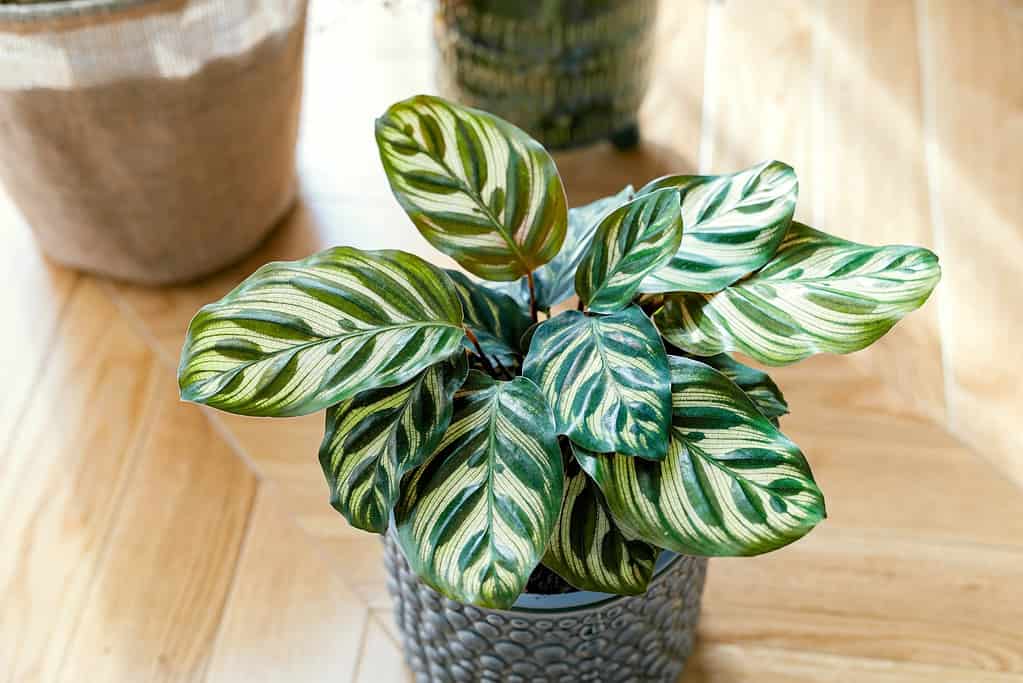
©Damian Lugowski/iStock via Getty Images
Calathea is another great indoor plant that can be used to combat dry winter air. Their dark purple and boldly variegated foliage also make them a stunning addition to any space.
3. Spider Plant
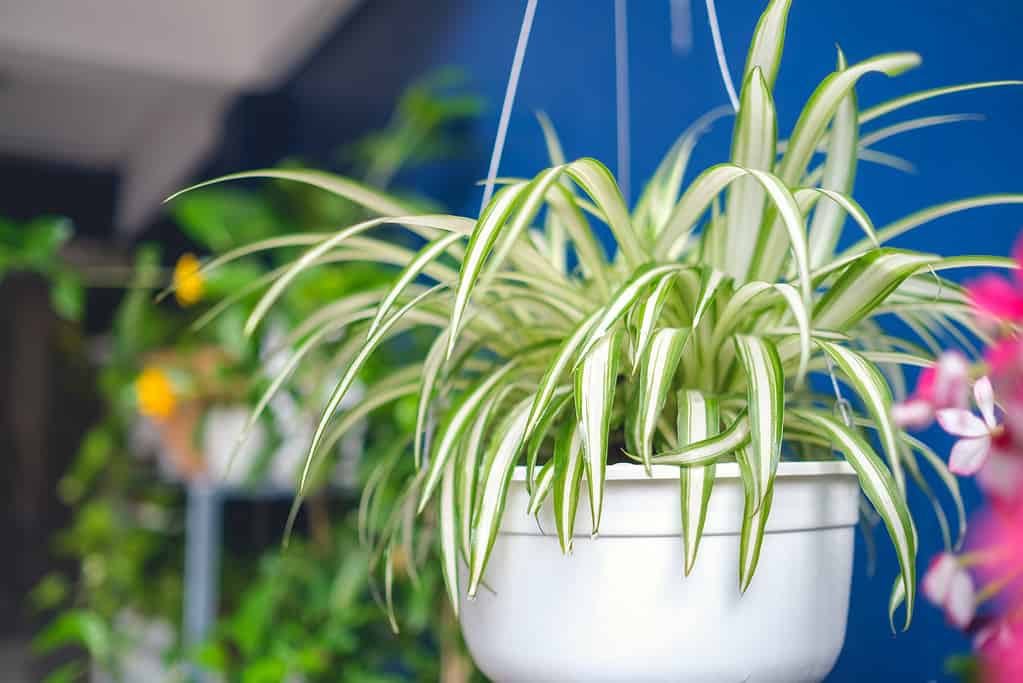
©yaoinlove/ via Getty Images
Spider plants also called spider ivy are herbaceous perennials of South Africa. Research indicates that investing in a spider plant can improve indoor relative humidity considerably.
4. English Ivy
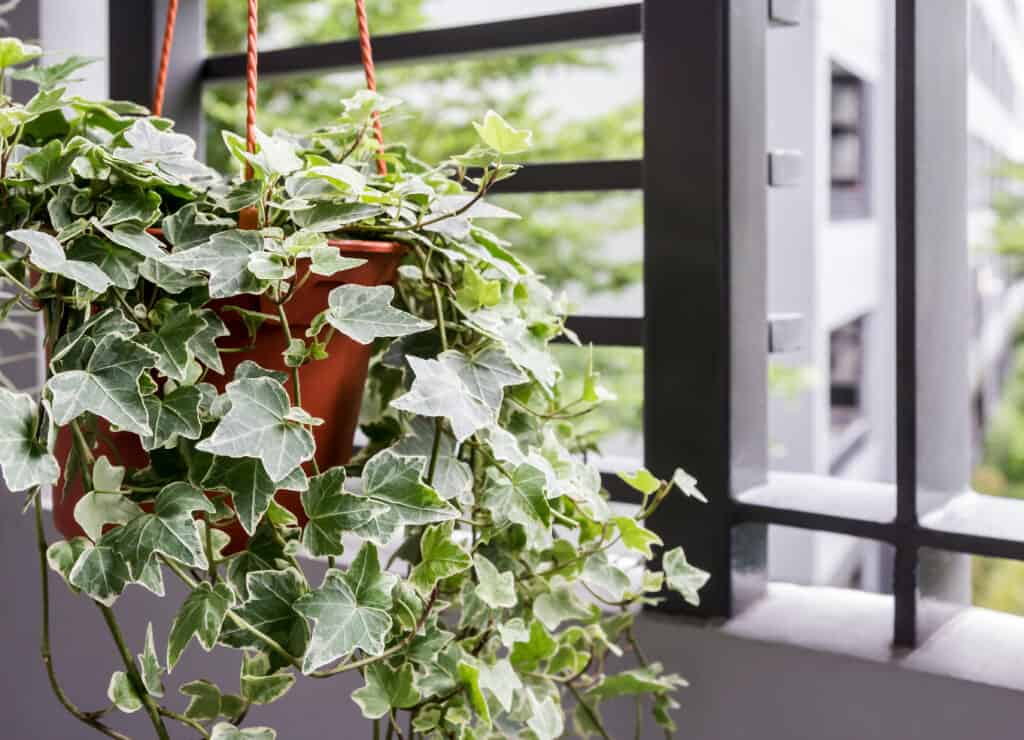
©ArtBackground/Shutterstock.com
The English ivy has a very high transpiration rate and is not just great for improving relative humidity but can also help remove carbon dioxide from indoor air.
5. Lady Palm
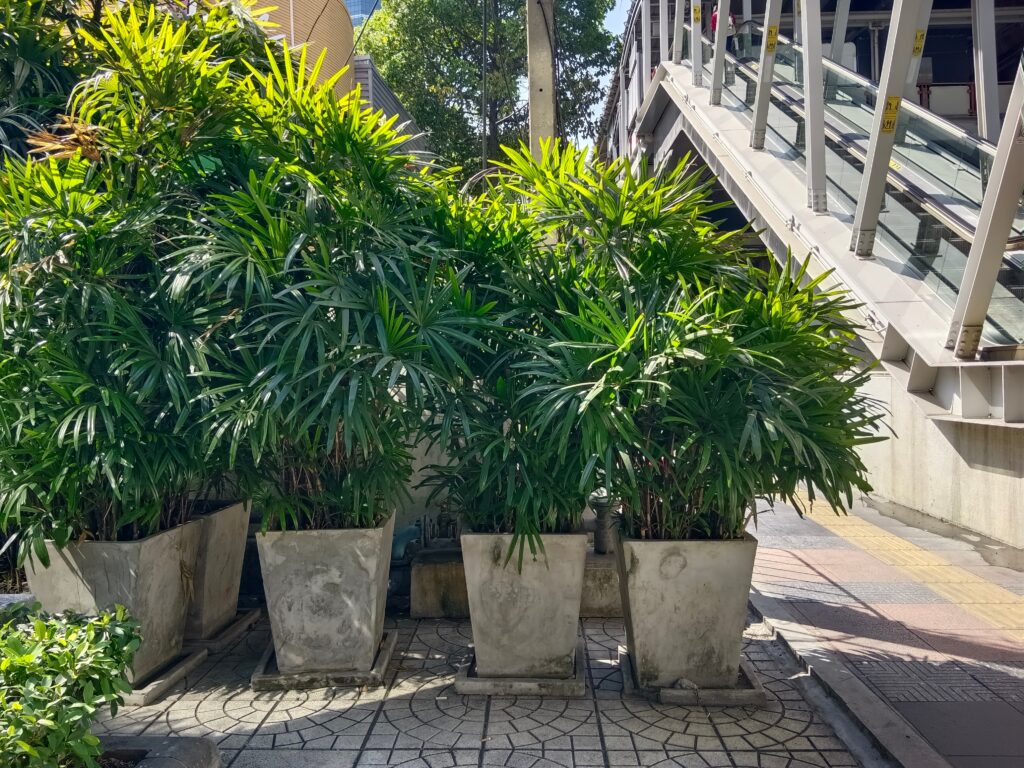
©porjai kittawornrat/Shutterstock.com
Lady palms are low maintenance and besides acting as a natural humidifier, they can help remove harmful toxins such as ammonia, xylene, and formaldehyde from the air.
The photo featured at the top of this post is © DimaBerlin/Shutterstock.com
Thank you for reading! Have some feedback for us? Contact the AZ Animals editorial team.







